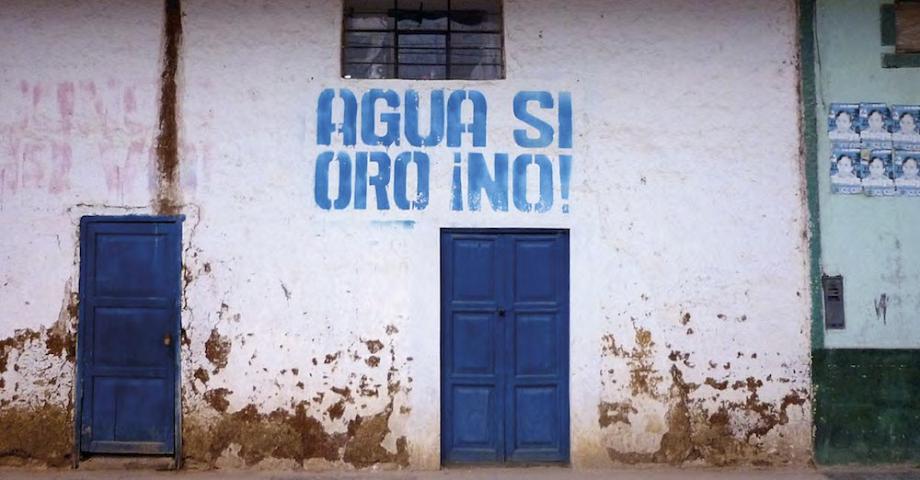More than 600 million roses will be sold this year in France. [1] That makes about 10 for every person in France, most of them being sold either on Valentine’s Day, and later, on Mother’s Day. Red roses symbolize a passionate love, white roses symbolize courting, and yellow roses symbolize friendship. Lovers’ day is also a holiday for the "flower transmission" market. It is a critical day for the international flower market, given that Valentine’s day is celebrated at the same time in Europe and North America. "As most roses are being sold on just two days out of the year, a huge production machine has to be put in place to be able to provide the necessary flowers," says Christophe Alliot, co-founder of BASIC, which stands for Bureau d’analyse sociétale pour une information citoyenne (a consulting organisation specialized in measuring the social and environmental impact of international supply chains).
An example from a Parisian florist who usually orders a thousand stems for each working day: to prepare for Valentine’s Day, he will buy 8,500 from his wholesaler in Rungis.
Where do these millions of roses, grown especially to decorate a romantic dinner, come from? About one in four roses sold in France will come from within France itself, mostly from Var and Finistère. What about the rest? Whether we buy them directly at the florist or online, most of them can be traced back to the Netherlands. The Dutch flower market is doing well. The Netherlands are the leaders in the EU, which is in turn the world leading flower producer, taking 42% of the global market in 2012. [2]
The road of the rose leads to Africa
If the Netherlands continue to feed the global rose market, the Old Continent nevertheless has to import the largest part of its flowers. From Amsterdam, where the packaged flowers arrive by plane, the road of the rose brings us to countries closer to the Equator: primarily, to East Africa, Kenya (31% of of European imports of cut flowers, overwhelmingly roses), and Ethiopia (12%). Then, to Latin America, mostly Ecuador (8%) and Colombia (7%). In these countries, sunshine and altitude allow for year-round flower growing season.
When a pretty bouquet makes it to your door, there is a strong probability that it is made up of roses from Kenya. They will have traveled for about 72 hours, and 7,000 kilometers. The roses are first cut in a field near Lake Navaisha (at an altitude of 2,000 meters), where most of the country’s horticultural plantations are located. They are then transported by refrigerated truck to avoid any spoilage. Then, onto the airplane for Amsterdam. Two thirds of them are sold at auction to wholesalers who will in turn sell them to independent florists, and retail chains such as Interflora, Florajet, or Monceau, who will commercialize them via local retailers or at malls. Others will make their way to a workshop, such as Aquarelle in Oise, near Paris, where they will be assembled into bouquets by about a hundred workers. They will then be delivered to the recipients, somewhere between Dunkirk and Perpignan, even if that means getting back on an airplane. At each stage, the roses must be kept cold in order to keep them from wilting.
Giant farms and greenhouses with 5,000 workers
It was in the 1990s that large international groups invested in flower farms all along the Equator: Dole Foods, the American fruit company, invested in Latin America, whereas British, Dutch and Indian companies chose Kenya, and more recently Ethiopia. On the banks of Lake Naivasha, in Kenya, giant farms can employ up to 5,000 people. This globalized rose business obviously has social and ecological consequences. The climate impact is not necessarily the biggest problem: a Kenyan rose, even with transport by airplane, emits six times less CO2 than a Dutch rose, grown under a greenhouse heated by natural gas. [3] Still, a 2007 article by Terra Eco assessed that "the energy expenditure that comes with buying a bouquet of 25 roses is equivalent to a 20 kilometer car trip."
Down South, there are other problems. The city of Naivasha has had to face a staggering influx of plantation workers and their families: over two decades, the population has been multiplied by 40, growing from 6,000 to 240,000! Infrastructure has not kept up. Classrooms have 80 students per class, hospital beds have to be shared. There are growing tensions between locals and migrants. And the working conditions on the plantations are especially bad. In Colombia, "working hours can be long, up to 60 hours a week", with "six to ten extra hours per day during the high season, which falls on the weeks leading up to Valentine’s Day", says the Committee for Human Rights in Latin America, a Quebec-based NGO (half of flowers imported into Canada come from Colombia).
3 cents per rose for plantation workers
In East Africa, salaries for greenhouse workers, mostly women, are not high enough to cover basic needs, according to the organization Women Working WorldWide, whose study of 38,000 women working in horticultural farms in East Africa showed that the average monthly salary for a Kenyan worker was between 59 and 94 dollars, and between 28 and 46 dollars for their Ethiopian counterparts. [4] When a consumer buys a rose in Europe for 1,5 €, only 0,03 € will make it into the pockets of the people who grew it, 2% of the retail price. A rose is sold at 0,12 € per stem upon leaving the farm. After its arrival in Amsterdam, it is bought for 0,8 € by the retailer. Between the two ends of the chain, the difference is divided among middlemen, as well as paying for the transport, especially air travel. [5]
In addition to low compensation, working in flower plantations comes with serious occupational risks, including because of the intensive use of pesticides and chemical fertilizers. "In Colombia, 200 kilos of pesticides are used per hectare, which is double what is used on the same surface in Holland, and about 75 times that of conventional agriculture in the developed nations," points out the Quebec NGO. "In Ecuador, we observed several cases of cancer striking female workers at 45. Since they were working off the books, they had no rights to compensation", says Christophe Alliot, who was on the scene as part of a delegation from Max Havelaar, one of the prominent organizations involved in fair trade. In France, no fewer than 26 different herbicides, insecticides, and fungicides may be sprayed on flowers.
Is Lake Naivasha drying up?
Roses are also water-guzzling plants: 7 to 13 liters are necessary to bring one flower to blossom. As a result, the level of Lake Naivasha, from which the farms get their water, is inexorably dropping. A drop "which coincides with the start of the flower production in the region in 1982", says UNESCO, in a study published in 2010. A more recent research study, conducted by the University of Bonn (Germany) and Twente (Holland), shows that the lake has only 60% of its initial water reserves left. Will the second largest lake in Kenya meet the same sorry fate as the Aral Sea? This would affect not only the rose business and local people, but also the Masai, a tribe whose cattle come to the lake to drink. Meanwhile, the situation "is creating tensions between the pastoralists and capitalist farms", points out Christophe Alliot.
Faced with public outrage over dropping water levels and poor working conditions, several horticultural companies have vowed to adopt more responsible practices. In Switzerland, a campaign led by several NGOs and the work undertaken by Max Havelaar, with the support of some major retail chains and public authorities, have led to the creation of the first certified "fair trade" flower farm, Panda Flowers. In the UK, the Flamingo group, which produces 120 millions roses annually in Naivasha for the British market, also claims to have reduced water and pesticide use, and to have improved working conditions.
The invisible labeled roses
And in France? The small business Aquarelle, one of the main retailers of flowers online, gets its flowers directly from farms in Kenya or Ethiopia. [6] "We try to be careful. We go see the conditions for ourselves. We work with farms who try not to use pesticides. And if we are unable to meet the staff directly, we do not work with that farm," says François de Maublanc, CEO of Aquarelle, nevertheless acknowledging that the company has not put an ethical charter in place, nor have they objectively assessed the practices of their suppliers. "There is always a difference between objective norms and what people do", says the CEO in defense of his company.
Several certification schemes exist when it comes to the material quality of flowers, as well as for social and environmental criteria, [7] but they are invisible to the consumer. "There are several labels, which are not taken seriously by the market. In these conditions, it is difficult to start a virtuous circle that flower producers could follow up on," explains Christophe Alliot. One should also be wary of "good practices" which can be a bit too paternalistic. Investing in schools or clinics around farms is a good thing. "But this creates dependence. A worker who has a falling out with the boss risks losing everything: salary, school for the children, the health center, and sometimes her house," warns Christophe Alliot. "These certifications will not have a real positive effect unless they are accompanied by serious work with the producer and the employees, not just an annual audit. For the fair trade certified farms, it took three years to organize meetings with the workers, explain their rights, and to inspire them with the desire to unionize." Today, 20 flower plantations have a Fairtrade/Max Havelaar certification in Kenya; one of them is the Oserian farm, which has 4,300 employees.
So there is some progress. But in the absence of clear labeling, it is impossible for the consumer to differentiate between a rose grown under sustainable conditions and one that is not. The Indian multinational Karuturi, which produces 580 million roses per year in Kenya and Ethiopia, many of which find their way to Europe, has been accused of tax evasion by the Kenyan administration. Since this winter, it has also been the target of strikes and protests by Kenyan workers, who are complaining about the non-payment of wages, the lack of protection against pesticides, and sexual harassment by managers. "Karuturi makes sure its employees have good working conditions and equitable pay," responded the firm in a press release. Does Karuturi supply the French market? "We do not deal with them. This social movement is the best thing that could happen," comments François de Maublanc, on behalf of Aquarelle. "Even if we have half of producers conforming to standards, if the other half do whatever they want, this is not enough. It is the whole sector which must stop the worst practices, by law if necessary," concludes Christophe Alliot. So, which type of roses will you offer to your beloved?
Ivan du Roy
—
Photo : CC World Bank




